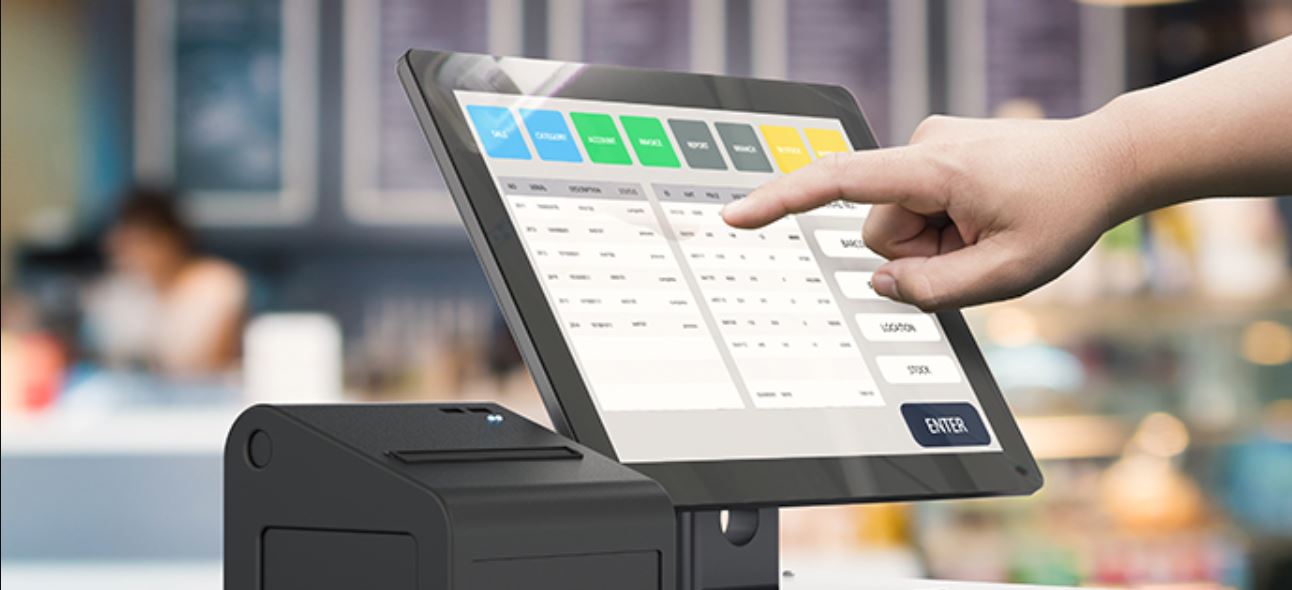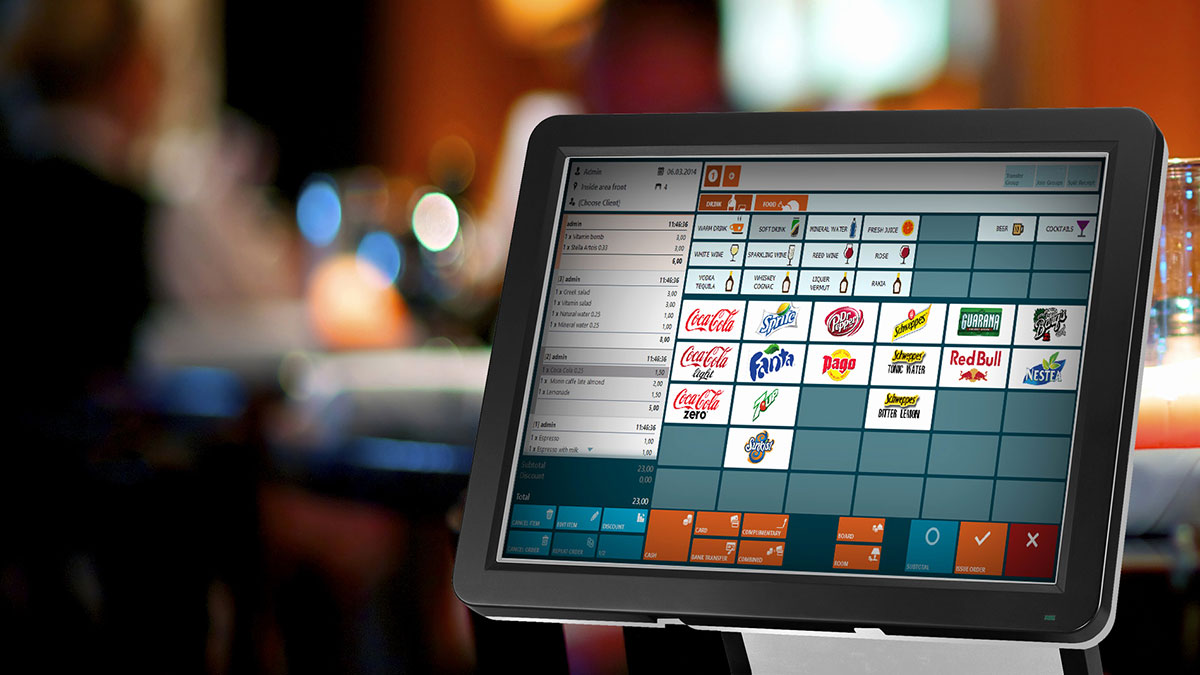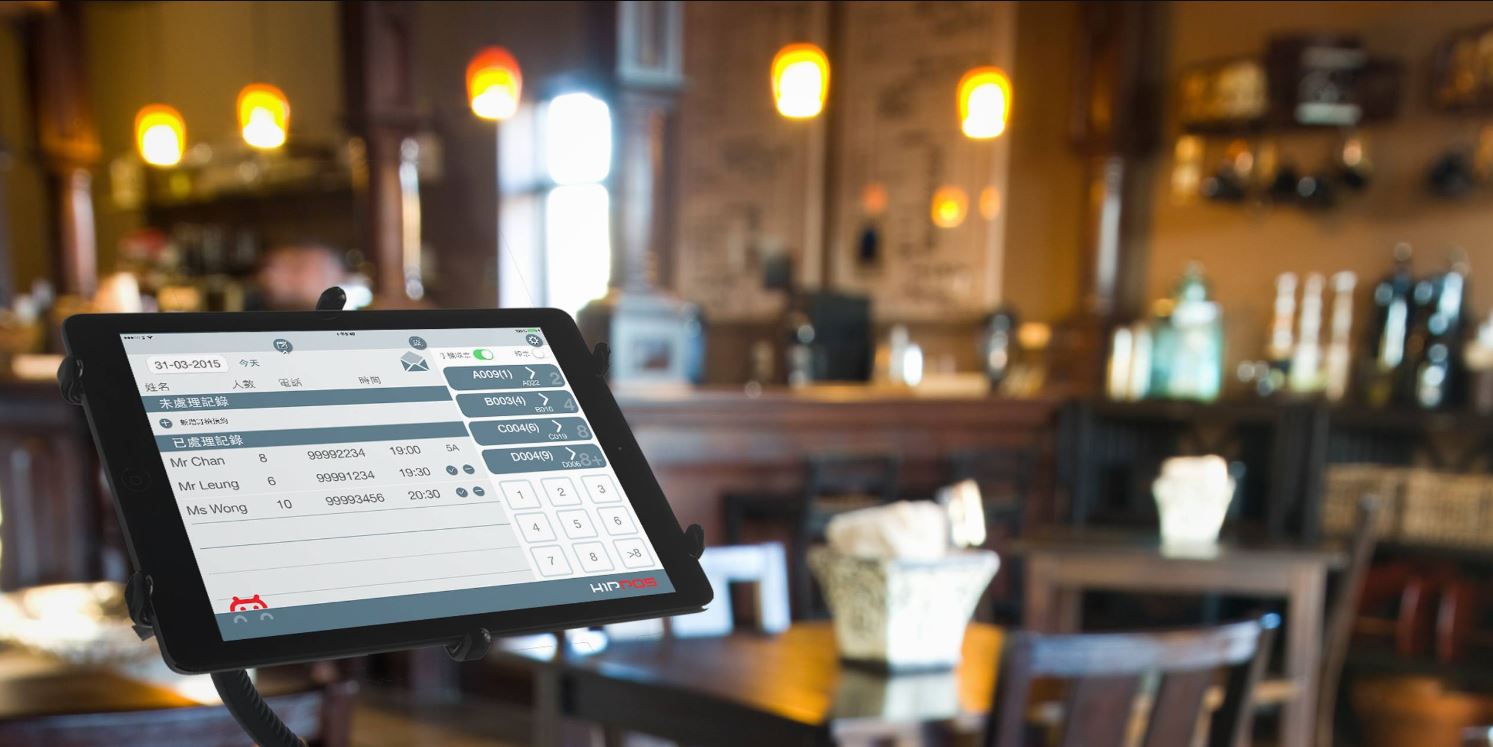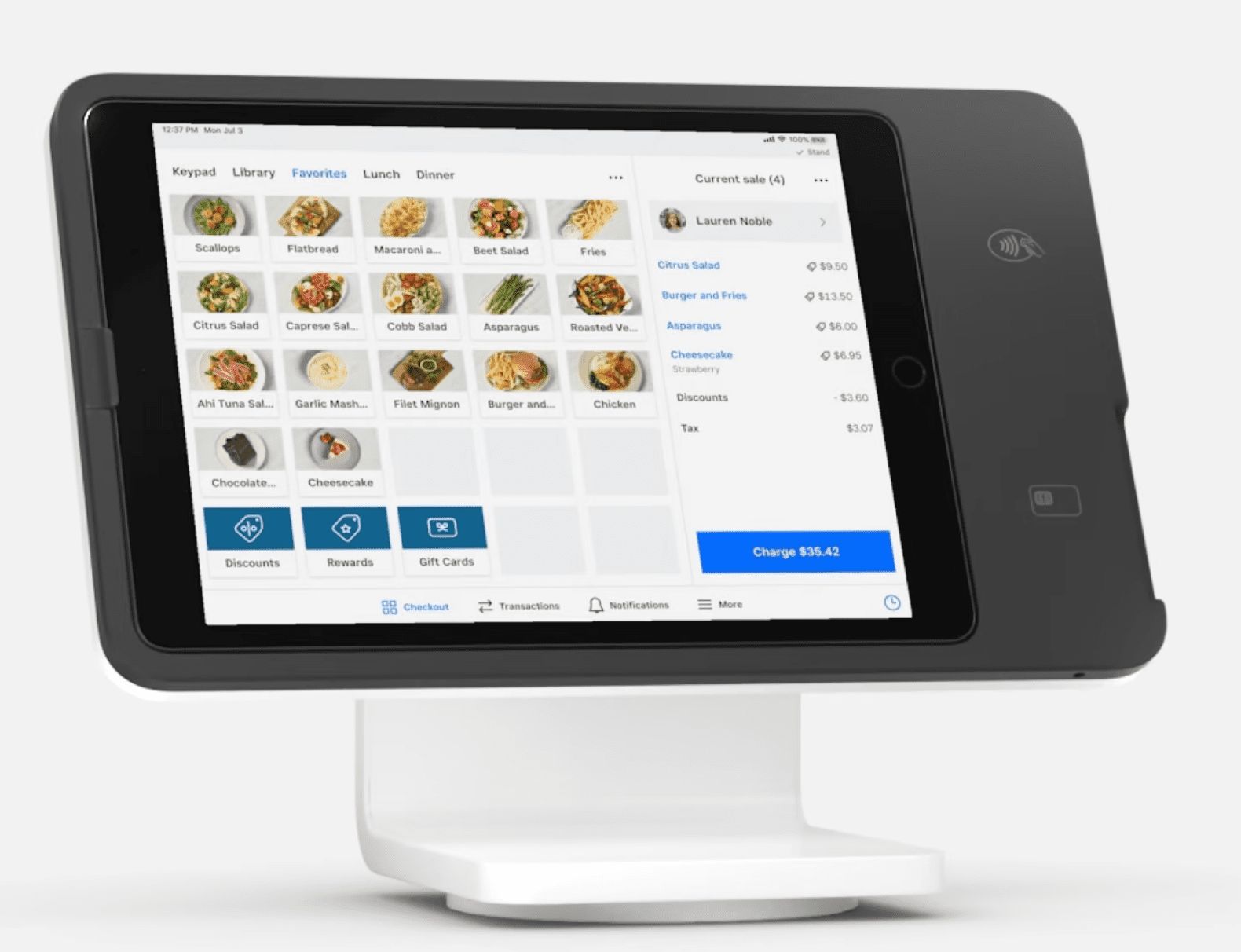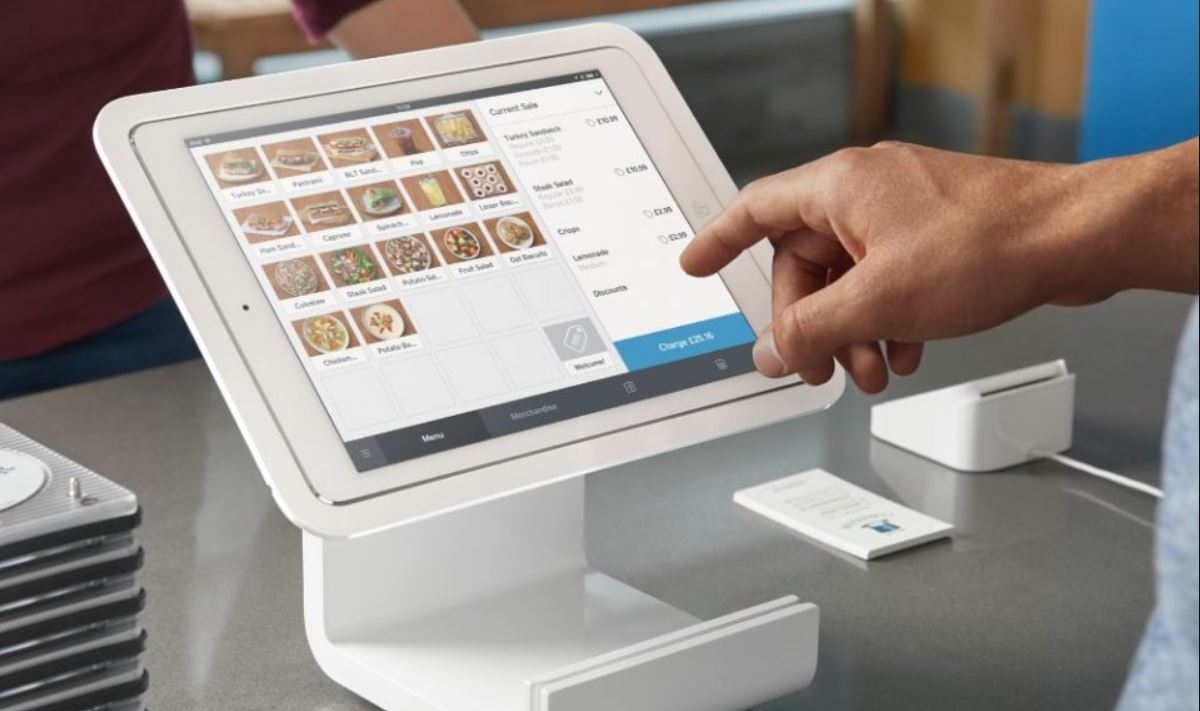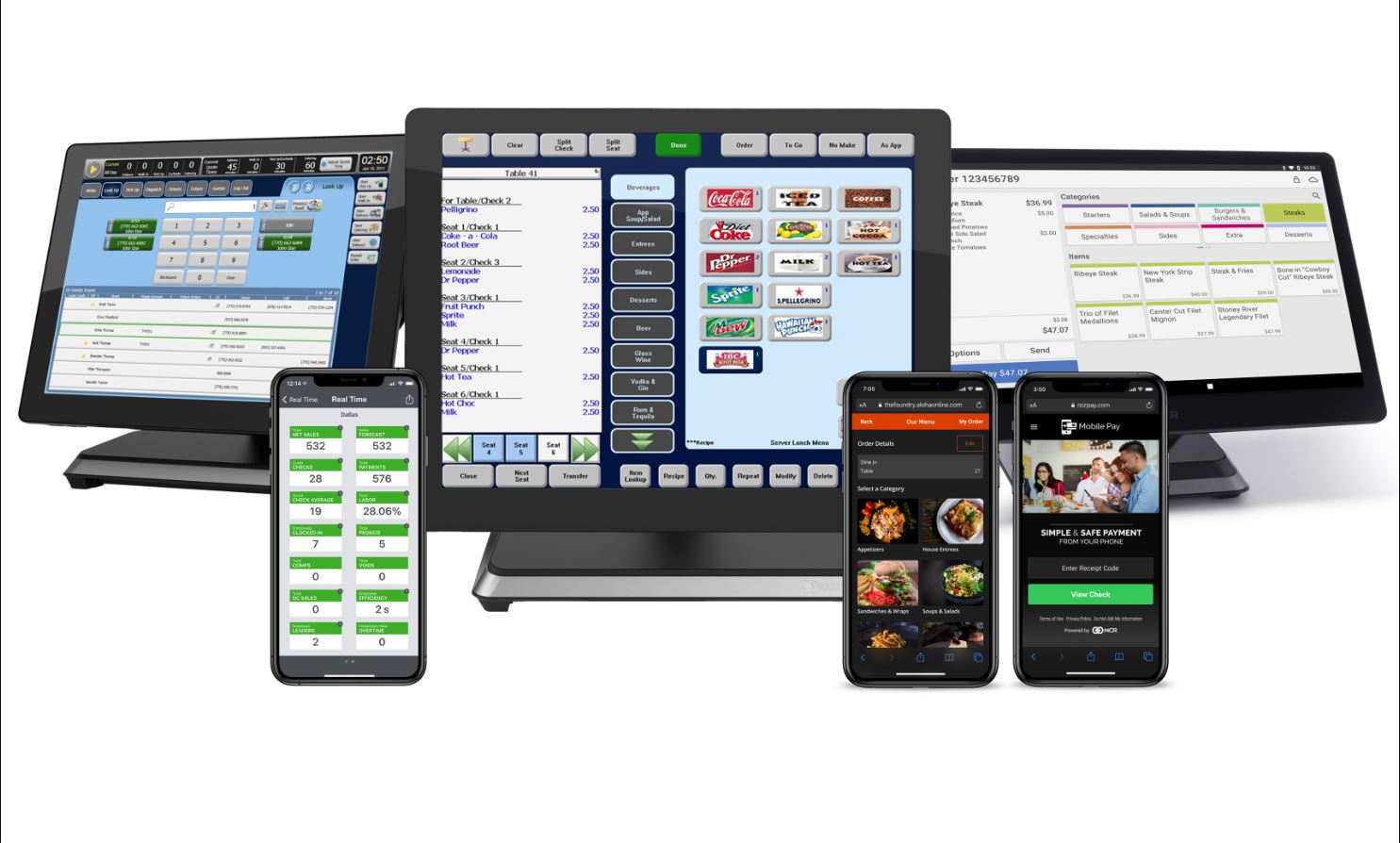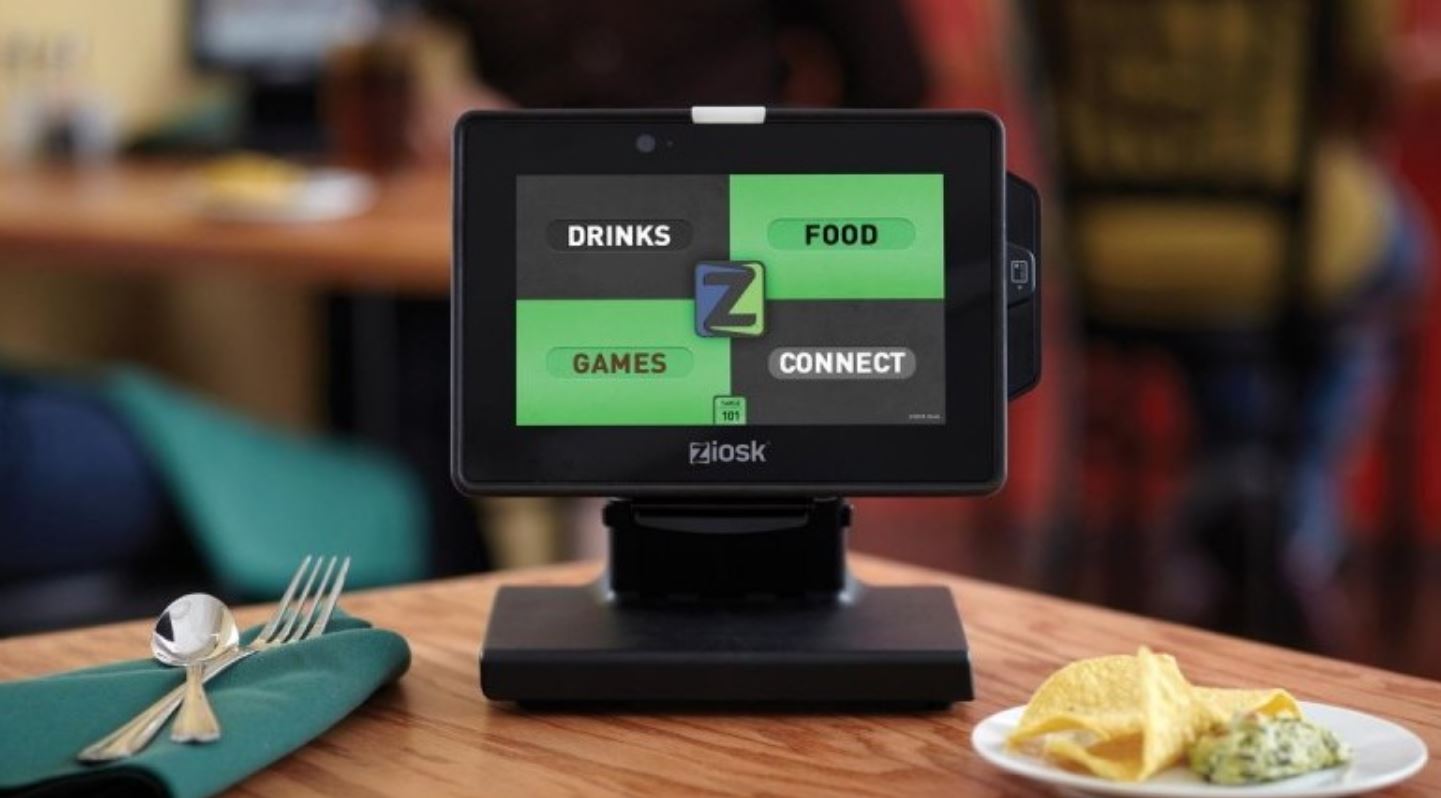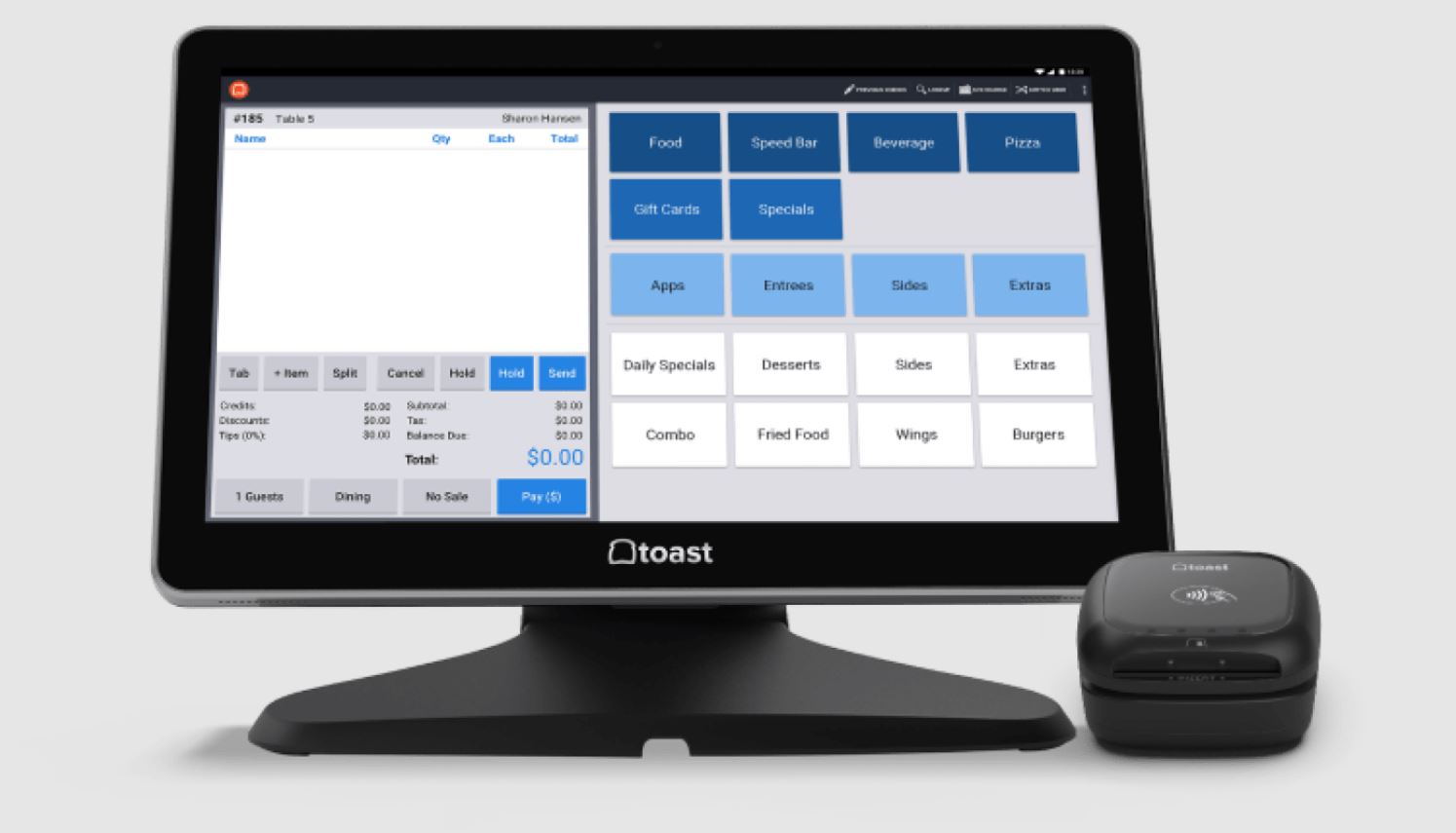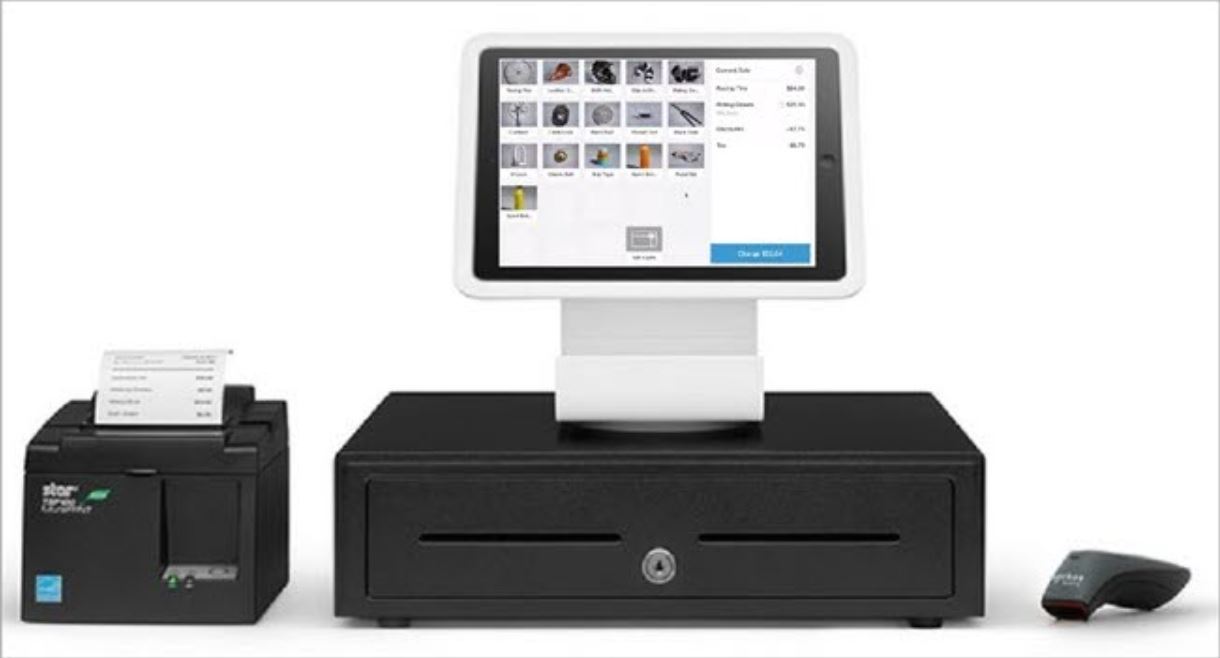Introduction
Welcome to the world of restaurant operations, where efficiency and accuracy are crucial for success. One of the key tools that can significantly enhance the management of a restaurant is a Point of Sale (POS) system. In today’s fast-paced, technology-driven society, a restaurant POS system has become a necessity rather than a luxury.
A restaurant POS system is a software and hardware combination that streamlines various operations within a restaurant, such as order processing, payment transactions, inventory management, and staff scheduling. It serves as the central hub that connects different departments, simplifies complex tasks, and improves overall productivity and customer experiences.
With the advent of advanced POS systems specifically designed for the restaurant industry, the days of manually taking orders and calculating bills are long gone. Restaurant owners and managers now have access to a wide range of features and functionalities that empower them to automate tasks, make data-driven decisions, and provide seamless service.
From quick-service restaurants and cafes to fine dining establishments, a restaurant POS system can revolutionize the way operations are managed. Whether you’re a small eatery or a large franchise, implementing a restaurant POS system can bring tremendous benefits to your business both in terms of operational efficiency and customer satisfaction.
In this article, we will explore the key features of a restaurant POS system, the benefits it offers, and important considerations when choosing the right system for your establishment. By the end, you will have a comprehensive understanding of how a restaurant POS system works and the positive impact it can have on your restaurant’s bottom line.
What Is a POS System?
A Point of Sale (POS) system is a combination of software and hardware that allows businesses, including restaurants, to process transactions and manage various aspects of their operations. In the context of a restaurant, a POS system serves as the central hub for order entry, payment processing, inventory management, and other crucial tasks.
Essentially, a restaurant POS system acts as a digital cash register that not only handles transactions but also provides valuable insights and tools to streamline operations. It is designed to simplify the daily tasks of restaurant staff, from taking orders to generating bills and managing inventory levels.
In the past, restaurants relied on manual methods to handle orders and process payments. This process was not only time-consuming but also prone to errors and inconsistencies. With the emergence of advanced technology, restaurant POS systems have evolved to address these challenges and offer a range of features and benefits to improve efficiency and customer experience.
Modern restaurant POS systems can be installed on various devices, such as tablets or terminals, and are typically accompanied by peripherals like card readers, printers, and kitchen display systems. These systems are user-friendly, allowing staff to quickly learn and adapt to the workflow.
One of the key functions of a restaurant POS system is order management. When a customer places an order, whether it’s dine-in, take-out, or delivery, it is entered into the POS system, which then relays the information to the kitchen or bar for preparation. This eliminates the need for manual communication and reduces the chances of errors or misinterpretation.
Additionally, a restaurant POS system enables seamless payment processing. By integrating with various payment methods, such as credit and debit cards, mobile payments, and even contactless payments, customers can conveniently settle their bills. The system can also split bills, apply discounts or promotions, and generate detailed reports for financial analysis.
Beyond order and payment management, a restaurant POS system can offer other valuable features, including inventory management, staff scheduling, customer relationship management, and reporting and analytics. These features help restaurant owners and managers make informed decisions, optimize inventory levels, track employee performance, and analyze sales trends.
In summary, a restaurant POS system is a powerful tool that revolutionizes the way a restaurant operates. It brings automation, efficiency, and accuracy to order management, payment processing, inventory control, and other essential tasks. With its myriad of features and functionalities, a restaurant POS system empowers businesses to enhance customer service, streamline operations, and drive profitability.
Benefits of Using a POS System in a Restaurant
A restaurant POS system offers numerous advantages that can positively impact both the day-to-day operations and the overall success of a restaurant. Let’s explore some of the key benefits:
- Improved Efficiency: With a restaurant POS system, manual tasks like taking orders and calculating bills are automated, eliminating the risk of human error. This saves time and allows staff to focus on providing excellent customer service.
- Streamlined Order Management: A POS system allows servers to input orders directly into the system, which sends them directly to the kitchen or bar. This minimizes the chances of miscommunication and ensures orders are prepared accurately and promptly.
- Accurate Inventory Management: POS systems enable real-time tracking of inventory levels, including ingredients, supplies, and beverages. This helps to prevent stockouts, reduce wastage, and optimize purchasing decisions. Some systems can even generate automated alerts when inventory reaches a specified threshold.
- Efficient Staff Scheduling: POS systems often have built-in scheduling tools that streamline the process of creating staff schedules. This ensures optimal coverage during busy periods and helps managers allocate resources effectively.
- Enhanced Customer Service: POS systems can store customer information, enabling personalized experiences and targeted marketing campaigns. They can also track order history and preferences, allowing staff to provide a more tailored dining experience.
- Improved Reporting and Analytics: POS systems generate comprehensive reports that provide valuable insights into sales trends, popular items, and profitability. This helps management make data-driven decisions and identify opportunities for growth and optimization.
- Seamless Payment Processing: With integrated payment processing, POS systems allow for quick and secure transactions. They can accept various payment methods, including credit cards, mobile payments, and even split payments, providing convenience for customers and reducing the risk of errors.
- Centralized System: A POS system serves as a centralized hub for all aspects of restaurant operations. This eliminates the need for separate systems or manual processes, improving efficiency and reducing potential discrepancies.
By implementing a restaurant POS system, businesses can harness these benefits to create a more streamlined and efficient operation. Whether it’s optimizing inventory, improving customer experiences, or enhancing decision-making processes, a POS system is a valuable tool that can contribute to the long-term success of a restaurant.
Key Features of a Restaurant POS System
A restaurant POS system offers a wide range of features and functionalities designed to optimize various aspects of restaurant operations. These features not only streamline the workflow but also enhance efficiency, improve customer experiences, and provide valuable insights into the business. Let’s explore some key features of a restaurant POS system:
- Order Management: A restaurant POS system allows servers to efficiently take orders and send them directly to the kitchen or bar. This minimizes errors and ensures prompt service.
- Table Management: POS systems often provide table management tools, allowing staff to monitor table availability, assign tables to customers, and track their status throughout the dining experience.
- Menu Customization: POS systems enable easy customization and modification of menus, including adding or removing items, setting prices, and creating special menu offerings for different times or events.
- Inventory Management: POS systems track inventory levels, including ingredients, supplies, and beverages. This helps prevent stockouts, reduce waste, and streamline purchasing decisions.
- Staff Management: POS systems often include features for staff scheduling, time tracking, and performance evaluation, allowing managers to efficiently manage their workforce.
- Customer Relationship Management (CRM): CRM features store customer information, including contact details, preferences, and order history, enabling personalized experiences and targeted marketing campaigns.
- Reporting and Analytics: POS systems generate comprehensive reports that provide insights into sales trends, popular items, and profitability. This helps management make data-driven decisions and identify areas for improvement.
- Integration with Payment Processors: POS systems seamlessly integrate with various payment processors, allowing for quick and secure payment transactions, as well as support for different payment methods such as credit cards, mobile payments, and contactless payments.
- Kitchen Display System: Some POS systems include a kitchen display system that digitally displays orders in real-time, improving communication between the kitchen staff and front-of-house.
- Security and Compliance: POS systems prioritize data security and compliance with industry standards, protecting sensitive customer and financial information.
These are just a few examples of the key features offered by a restaurant POS system. Each system may have additional features or customizable options to suit the specific needs of a particular restaurant. When selecting a POS system, it’s essential to consider which features are most important for your restaurant’s unique requirements and growth objectives.
How Does a Restaurant POS System Work?
A restaurant POS system is a complex combination of software and hardware that works together to facilitate the smooth operation of a restaurant. While the specific functionalities may vary depending on the system provider, here is a general overview of how a restaurant POS system typically works:
1. Order Entry: When a customer places an order, whether it’s through a server, a self-ordering kiosk, or an online platform, the order is entered into the POS system. The system records the details of the order, including the items, quantity, special requests, and any modifiers or additions.
2. Order Processing: Once the order is entered, the POS system communicates the information to the appropriate departments such as the kitchen or bar. This ensures that the food or drinks are prepared promptly and accurately.
3. Payment Processing: When the customer is ready to pay, the POS system calculates the total amount owing, taking into account any taxes, discounts, or gratuities. It then processes the payment through integrated payment processors, allowing customers to pay using various methods, such as credit cards, mobile payments, or cash.
4. Inventory Management: A key feature of a restaurant POS system is inventory management. The system keeps track of inventory levels, monitoring ingredient usage, and automatically updating quantities as items are sold. This helps restaurant owners and managers to ensure that they have enough stock on hand and minimize wastage.
5. Reporting and Analytics: POS systems generate comprehensive reports that provide valuable insights into sales trends, popular items, and profitability. These reports help restaurant owners and managers make data-driven decisions and identify opportunities for growth and improvement.
6. Customer Relations: Many POS systems include customer relationship management (CRM) features. These features store customer information, including contact details, preferences, and order history. This allows restaurants to personalize the dining experience, provide targeted promotions, and build customer loyalty.
7. Integration and Scalability: A restaurant POS system is designed to integrate with various peripherals and third-party applications, such as kitchen display systems, online ordering platforms, and loyalty programs. This integration enhances efficiency and allows for future scalability as the restaurant grows.
Overall, a restaurant POS system acts as the central hub that connects different departments and streamlines operations. It eliminates manual processes, reduces errors, and enhances customer experiences. By automating tasks, providing real-time data, and offering valuable insights, a POS system empowers restaurant owners and managers to make informed decisions and run their establishments more efficiently.
Choosing the Right POS System for Your Restaurant
When it comes to selecting a POS system for your restaurant, it’s essential to consider your specific needs, budget, and long-term growth objectives. Here are some key factors to consider when choosing the right POS system:
1. Features and Functionality: Evaluate the features and functionalities offered by different POS systems and prioritize the ones that align with your restaurant’s requirements. Consider aspects such as order management, inventory tracking, reporting and analytics, table management, and customer relationship management.
2. Scalability: Choose a POS system that can accommodate your restaurant’s growth. Consider whether the system supports multiple locations, online ordering integration, and the ability to add additional terminals or peripherals as your business expands.
3. Usability and Training: Ensure that the POS system is intuitive and user-friendly. Consider how easy it is for your staff to learn and navigate the system. Look for providers that offer comprehensive training and ongoing support to maximize the system’s potential.
4. Integration: Assess the integration capabilities of the POS system with other tools and platforms you currently use or plan to implement. For example, if you have an online ordering platform or loyalty program, check if the POS system can seamlessly integrate with them for a unified operation.
5. Payment Processing: Consider the POS system’s ability to process various payment methods, including credit cards, mobile payments, and contactless payments. Ensure that the system is secure, compliant with industry standards, and provides reliable payment processing options.
6. Pricing and Affordability: Take into account the upfront costs, including hardware and software, as well as any monthly or transaction-based fees. Understand the pricing structure and evaluate the overall value the POS system provides for your investment.
7. Customer Support: Consider the level of customer support offered by the POS system provider. Look for a provider that has a responsive support team and offers ongoing assistance and software updates to ensure the smooth operation of your restaurant.
8. Reviews and Reputation: Read reviews and seek recommendations from other restaurant owners or industry professionals. Consider the reputation and track record of the POS system provider to ensure reliability and customer satisfaction.
By carefully considering these factors and evaluating multiple options, you can make an informed decision and choose a POS system that best meets the unique needs of your restaurant. Remember, a well-chosen POS system can streamline operations, enhance efficiency, and contribute to the long-term success of your business.
Implementing a POS System in Your Restaurant
Implementing a POS system in your restaurant can be a transformative step towards streamlining operations and improving overall efficiency. Here are some key considerations and steps to follow when implementing a POS system:
1. Research and Select the Right POS System: Based on your requirements and budget, thoroughly research different POS system providers. Consider their features, reputation, customer support, and pricing. Select a system that aligns with your restaurant’s needs and growth plans.
2. Hardware and Software Setup: Work with the POS system provider to determine the hardware and software requirements for your restaurant. Ensure that you have the necessary infrastructure, such as terminals, tablets, cash drawers, printers, and kitchen display systems. Install and configure the software according to your restaurant’s specifications.
3. Inventory Setup: Set up the inventory management component of the POS system. Input your current inventory levels, item descriptions, ingredients, and suppliers into the system. Ensure that the system accurately reflects your existing inventory so that you can start managing and tracking it effectively.
4. Menu Configuration: Customize the POS system’s menu to match your restaurant’s offerings. Input menu items, prices, descriptions, modifiers, and any special configurations. Ensure the menu is logical and user-friendly for easy order entry and accurate tracking.
5. Employee Training: Invest time and resources in comprehensive employee training. Train your staff on how to use the POS system, input orders, process payments, and access essential features. Provide ongoing training and support to ensure that all employees are comfortable and proficient in using the system.
6. Data Migration: If you are transitioning from an existing system or manual processes, work with the POS system provider to migrate your data seamlessly. This includes transferring customer information, order history, and any other relevant data to the new system. Validate the accuracy of the migrated data before going live.
7. Testing and Integration: Perform rigorous testing to ensure that the POS system integrates smoothly with other systems and peripherals, such as payment processors, online ordering platforms, and loyalty programs. Conduct tests for order processing, printouts, inventory management, and reporting to identify and address any issues.
8. Go Live and Monitor: Once all setup and testing is complete, go live with the POS system. Monitor its functionality and performance closely during the initial period of implementation. Address any issues promptly and ensure that staff members are comfortable and confident in using the system for day-to-day operations.
9. Ongoing Maintenance and Support: Regularly update the POS system to benefit from bug fixes, security patches, and new features. Stay in touch with the POS system provider for ongoing support, troubleshooting, and training as needed. Regularly review reports and analytics to gather insights and make informed decisions for your restaurant’s ongoing success.
By following these steps and staying proactive during the implementation process, you can successfully integrate a POS system into your restaurant’s operations. Embrace the newfound efficiency and control that a POS system brings, and continually optimize its usage for the optimal performance of your restaurant.
Common Misconceptions About Restaurant POS Systems
While restaurant POS systems have become increasingly popular and beneficial for restaurant operations, there are several misconceptions that often surround their use. It’s important to debunk these misconceptions to gain a clearer understanding of the true value and capabilities of a restaurant POS system. Let’s explore some common misconceptions:
1. POS Systems are Only for Large Restaurants: Some may believe that POS systems are only suitable for large or chain restaurants. In reality, POS systems are beneficial for establishments of all sizes, from small cafes to fine dining restaurants. They offer features and functionalities that can benefit any restaurant, regardless of its size.
2. POS Systems are Too Expensive: Cost is often a concern when considering a POS system. While there are upfront costs involved, such as hardware and software fees, the long-term benefits and return on investment outweigh the initial expenses. Additionally, there are various pricing models available, including subscription-based options, making POS systems affordable for restaurants of different budgets.
3. POS Systems are Difficult to Learn and Use: Another misconception is that POS systems are complex and difficult to learn. In reality, modern POS systems are designed with user-friendly interfaces, intuitive workflows, and easy-to-navigate menus. With proper training and support, restaurant staff can quickly adapt to using a POS system effectively.
4. POS Systems are Only for Processing Payments: While payment processing is an essential feature of a POS system, it is by no means its only function. POS systems offer a wide range of functionalities, including inventory management, order processing, table management, reporting and analytics, and customer relationship management. They serve as a comprehensive solution for managing various aspects of restaurant operations.
5. POS Systems Require a Constant Internet Connection: While some POS systems rely on an internet connection for real-time updates and cloud-based storage, not all POS systems require constant connectivity. Some systems offer offline functionality, allowing your restaurant to continue operating even in situations where internet access may be limited or temporarily unavailable.
6. POS Systems Aren’t Secure: Security is a valid concern, especially when it comes to handling customer payment information. However, reputable POS system providers prioritize data security by implementing encryption, following industry standards, and regularly updating their systems. It’s important to research and choose a POS system provider that emphasizes data protection and compliance.
7. POS Systems Replace Human Interaction: One misconception is that POS systems eliminate the need for human interaction in the restaurant. In reality, POS systems are tools that enhance customer service and optimize operations. They allow staff to focus more on providing personalized experiences, while the system automates and streamlines tasks such as order processing and payment transactions.
By understanding and addressing these misconceptions, restaurant owners and operators can make informed decisions when considering the implementation of a POS system. It’s crucial to recognize the value and capabilities of POS systems in improving efficiency, enhancing customer experiences, and driving overall success in the ever-evolving restaurant industry.
Conclusion
A restaurant POS system is a powerful tool that can greatly enhance the management and efficiency of a restaurant. It offers a multitude of benefits, including improved order management, streamlined payment processing, efficient inventory control, and enhanced customer experiences. By implementing a POS system, restaurant owners and managers can optimize operations, make data-driven decisions, and ultimately drive growth and success.
When choosing a POS system, it’s essential to consider the specific needs and requirements of your restaurant. Look for a system that offers the right features and functionalities, aligns with your budget, and supports scalability. Adequate training and ongoing customer support are also important factors to ensure a smooth implementation and ease of use for your staff.
It’s important to dispel misconceptions that may surround restaurant POS systems. POS systems are not limited to large restaurants and can benefit establishments of all sizes. While there may be upfront costs, the long-term benefits and return on investment outweigh the initial expenses. Modern POS systems are designed to be user-friendly, intuitive, and accessible, making them easy to learn and use.
By implementing a POS system, you can streamline your restaurant’s operations, improve efficiency, enhance customer service, and gain valuable insights through reporting and analytics. It serves as a centralized hub that connects various aspects of your business, enabling you to make informed decisions and drive your restaurant’s success.
As technology continues to advance, restaurant POS systems will evolve to meet the ever-changing needs of the industry. Embracing these advancements and leveraging the capabilities of a POS system will position your restaurant for growth and competitiveness in the market.







